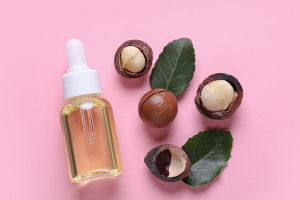Keeping flowers at home is a rewarding hobby that brings beauty and a touch of nature into living spaces.
To ensure that these flowers remain healthy and vibrant, choosing the right watering pot is crucial.
The watering pot you select will impact not only how effectively you can hydrate your plants but also how you manage the water's distribution and your ease of use.
Metal watering pots, commonly made from galvanized steel or aluminum, are a classic choice for plant care. These pots are appreciated for their durability and timeless aesthetic.
Metal watering pots are robust and capable of withstanding harsh weather conditions, making them suitable for both indoor and outdoor use. They come in various sizes and styles, often featuring a detachable spout or rose, which helps control the flow of water and allows for a gentle distribution over delicate flowers.
The primary advantage of metal watering pots is their durability. Unlike plastic pots, they are resistant to degradation and cracking, offering a long-term solution for your watering needs.
However, metal pots can become heavy when filled with water, which might be challenging for those with physical limitations. Additionally, if left outdoors, metal pots may develop rust over time, although this can add a rustic charm for some users.
Plastic watering pots are among the most popular choices for home flower care due to their affordability, lightweight nature, and variety of designs. These pots are typically made from high-density polyethylene (HDPE) or polypropylene, which makes them resistant to rust and corrosion.
Plastic watering pots are available in a wide range of colors, shapes, and sizes, allowing users to choose a design that best fits their taste and the needs of their plants.
One significant advantage of plastic watering pots is their ease of handling. Their lightweight construction makes them easy to carry, even when full of water. They are also less likely to break if dropped compared to ceramic or glass pots.
However, plastic watering pots can become brittle and crack under extreme temperatures or prolonged exposure to sunlight. Additionally, while they are generally durable, they may not have the same aesthetic appeal as metal or ceramic pots.
Ceramic watering pots offer a blend of functionality and aesthetics. Made from fired clay, these pots often feature beautiful glazes and intricate designs that can enhance the décor of any room.
Ceramic pots are heavier than plastic and metal options, which can be beneficial for stability, especially for larger plants. The weight of ceramic pots makes them less likely to tip over, which is particularly useful for larger, top-heavy plants.
Ceramic pots also have the advantage of being porous, which allows for better airflow to the plant’s roots and can help prevent overwatering. The natural breathability of ceramic can be beneficial for plants that require well-drained soil.
However, ceramic pots are more fragile and can break or chip easily if dropped. They are also more expensive than plastic or metal options and may require more care to maintain their appearance.
Self-watering pots are an innovative option that incorporates a reservoir system to provide a continuous supply of water to plants. These pots feature a built-in reservoir at the bottom that gradually releases water to the soil as needed.
This system is particularly useful for people who may not have the time to water their plants regularly or for those who travel frequently.
Self-watering pots come in various materials, including plastic, ceramic, and metal, and they offer convenience and efficiency. They help maintain consistent soil moisture levels, which can be beneficial for plants that are sensitive to fluctuations in water availability.
However, self-watering pots can be more expensive than traditional pots and may require occasional maintenance to ensure that the reservoir is functioning correctly.


